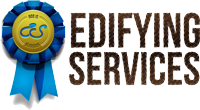Chapter 22 Life on the Edge
Teaching went reasonably well the rest of the year. The kids and I had come to an understanding: the bright ones agreed to read books when they were done with their class work instead of making trouble, allowing me to give the others the attention they needed.
I tried to make school more interesting. We had a walrus meat cooking class, held a fair to raise money for a class trip to the reindeer camp, and did group readings.
In January when the principle teacher’s wife was due with her first baby, my teacher friend from Seattle came and took her teaching spot for several weeks.
That meant some good friendship for me, along with some mentoring in the work of teaching. The fellow brought a lot of teaching aids with him, including meal worms for the kids to raise and observe. This lightened my teaching load and brightened our class time.
On another light note, my students provided me with entertainment, both in and out of the classroom. One day I was working with a 6th grader on his math, leaning my arm on his desk. I noticed that he wasn’t paying attention to the math paper but was staring at my arm. Before I could say anything he reached over, touched my forearm and said, “Mr. Wibberley, you have feathers!” Eskimos have very little body hair, while my forearms have quite a bit. “Feathers” was the only way he could think to describe this. It gave us both a good laugh.
Another time there was a scream from the back of the class and a girl came running to the front where I was standing. Right behind her came one of the boys. In his hand was the claw of a great snowy owl with a live mouse squirming in its grip.
The boy had tied strings to the tendons, so when he pulled on them the claw would close. Using this he had caught a live mouse and was now tormenting the girl with it! Not your average classroom disturbance.
As the weather warmed up from -50 F to around 0, the students thought that summer had arrived. The wooden basketball court outside my house had been shoveled off, so some of my students were out there playing basketbal–barefoot and shirtless!
The heat of the sun and its contrast with the really cold weather made them perfectly comfortable at 0 degrees!
The days got dramatically longer as Spring approached, staying light until 11 pm in May, and then in June there was no night at all, just a dusk between midnight and 1 am.
Eskimo parenting principles allowed children to do whatever they wanted until they were about age fourteen, so many of the students ran about the village until midnight. As we approached the end of May some played basketball outside my little house all night. Then they would come to school in the morning and sleep in class. Their parents knew this and allowed it. A different approach to education.
The Eskimos were a tough people, living under harsh conditions, and their children learned early to endure hardships. One day I saw two boys about six years old fighting, punching each other in the face. Both had bloody noses. Just as I came on the scene, their mothers arrived, pulled the boys apart, wiped off the blood, and let them go at it again!
Each weekend in the winter the village council would start up the generator and show a film in the village center. The day after a gladiator film was shown I saw two lines of boys, 8 to 12 years old, armed with large sticks for swords and garbage can covers for shields. They ran at each other, using their weapons with abandon, leaving some boys lying hurt on the ground in their wake. Life was tough. They were learning to cope.
I hoped they would survive. Some of my students didn’t. After I left, the boy who commented on my “feathers” was blown off a cliff by a sudden gust while collecting birds’ eggs.
Hunting accidents occurred often. Some years after I left the island, a walrus skin boat sank while pulling a whale into shore. All on board drowned, including two children. In another instance, a whale leaped out of the water and landed on top of a walrus skin boat killing all the men in it.
Airplane crashes also were a factor in the death toll. One time while I was out with an Eskimo on his ski-do, we came across a small plane lying upside down on the tundra. My friend told of how this plane had flown in a storm to the island to pick up a sick child. In the wild weather its altimeter had given a wrong reading and the pilot came down before reaching the airstrip and flipped over. He was killed and the nurse with him had her back broken.
Then the year after I left Savoonga, the BIA sent in a small charter plane to fly the teachers out to Nome. One of the engines failed on takeoff and the plane crashed, killing all on board. Life on the frontier was dangerous.


